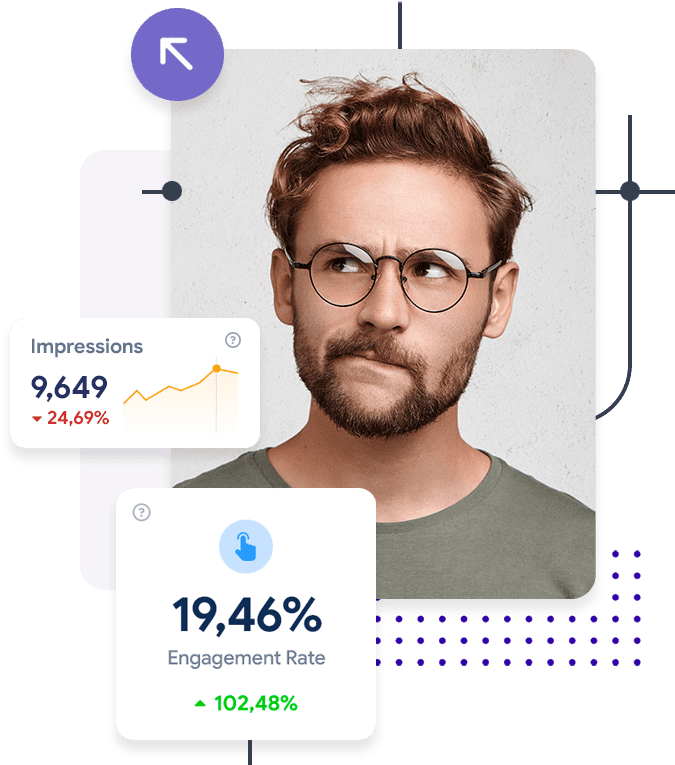
Seamless Workflow Integration
Transform your contract lifecycle with intelligent integrations that connect AI-powered review to your existing business systems, creating automated workflows that maximize efficiency and minimize disruption.
Integration-First Contract Intelligence

The most sophisticated contract analysis technology becomes meaningless if it creates additional friction in existing business processes. Traditional approaches to legal technology often require users to adapt their workflows to accommodate new systems, leading to poor adoption rates, inefficient processes, and ultimately failed implementations. The key to successful legal technology deployment lies not in the sophistication of the analysis capabilities, but in how seamlessly those capabilities integrate into existing business workflows.
Seamless workflow integration represents a fundamental shift in how legal technology is designed and deployed. Rather than expecting users to change their established processes, modern contract intelligence platforms adapt to existing workflows, inserting powerful AI capabilities at exactly the points where they add maximum value while requiring minimal behavioral change from users.
This integration-first approach recognizes that successful technology adoption requires more than just powerful features – it demands thoughtful consideration of how technology fits into the complex ecosystem of business processes, organizational hierarchies, and individual work habits that define modern business operations.
Intelligent Email Integration

Email remains the primary medium for contract exchange in most organizations, despite the availability of more sophisticated document management systems. Contracts arrive as attachments to emails, are forwarded between stakeholders for review, and generate extensive email chains as negotiations progress. Intelligent email integration transforms this familiar communication channel into a powerful contract intelligence platform.
Automatic Contract Detection and Analysis
Advanced email integration systems continuously monitor designated email accounts and automatically identify incoming contracts based on file types, content analysis, and sender patterns. When a contract is detected, the system immediately begins analysis, generating risk assessments, clause summaries, and benchmarking comparisons before users even open the document.
This automated processing eliminates the manual step of uploading documents for analysis while ensuring that every contract receives immediate attention. Legal professionals can focus their time on review and decision-making rather than administrative tasks, while business stakeholders receive relevant contract intelligence without having to remember to initiate analysis processes.
Contextual Email Enhancement
Email integration goes beyond simple document processing to provide contextual intelligence that enhances communication and decision-making. When contracts are forwarded or discussed via email, the system can automatically append relevant analysis summaries, risk flags, and recommended actions to email threads, ensuring that all participants have access to relevant contract intelligence.
This contextual enhancement is particularly valuable in complex negotiations where multiple stakeholders need to understand contract implications without having time for detailed legal review. Sales teams can quickly understand customer redlines, procurement professionals can assess supplier proposals, and executives can make informed decisions based on AI-generated insights delivered directly in their email workflows.
Automated Workflow Triggering
Email integration enables intelligent workflow automation that responds to contract events and analysis results. High-risk contracts can automatically trigger escalation procedures, sending alerts to senior legal professionals or creating tasks in project management systems. Standard agreements can be routed directly to appropriate stakeholders for expedited review, while complex documents initiate comprehensive analysis and review processes.
CRM and Sales Process Integration

Customer Relationship Management systems serve as the operational backbone for most sales organizations, tracking opportunities, managing customer interactions, and coordinating deal progression. CRM integration transforms these familiar systems into comprehensive contract intelligence platforms that provide sales teams with real-time visibility into contract status, risk assessment, and negotiation opportunities.
Real-Time Deal Intelligence
CRM integration provides sales teams with immediate access to contract analysis results directly within their opportunity records. When customer redlines arrive, AI analysis results appear automatically in the CRM, showing sales professionals exactly which changes are acceptable, which require negotiation, and which represent deal-breakers that need immediate attention.
This real-time intelligence enables sales teams to respond more quickly and effectively to customer requests, maintaining deal momentum while ensuring that contract terms remain within acceptable parameters. Sales professionals can focus on relationship building and value creation rather than waiting for legal review and interpretation.
Automated Deal Stage Progression
CRM integration enables sophisticated deal stage automation based on contract analysis results. Opportunities can automatically progress through sales stages as contracts meet specific criteria, while deals with significant legal issues can be flagged for additional review before advancing. This automation ensures that deal progression reflects actual contract status rather than optimistic sales forecasts.
The integration also enables more accurate sales forecasting by incorporating contract risk and negotiation complexity into pipeline analysis. Deals with standard contracts and low risk scores can be weighted differently than complex negotiations with significant legal obstacles, providing more realistic revenue projections and resource planning.
Historical Analysis and Pattern Recognition
CRM integration creates comprehensive databases that link contract terms with deal outcomes, customer characteristics, and sales performance. This historical intelligence enables identification of patterns that inform future negotiation strategies and sales approaches. Sales teams can understand which contract terms are most commonly negotiated by specific customer types and adjust their initial proposals accordingly.
Document Management System Integration

Document Management Systems represent the institutional memory of most legal departments, containing thousands or millions of contracts, agreements, and legal documents that have been executed over years or decades. DMS integration unlocks the value of these vast document repositories by applying modern AI analysis to historical contracts while seamlessly incorporating new documents into comprehensive intelligence platforms.
Comprehensive Portfolio Analysis
DMS integration enables comprehensive analysis of entire contract portfolios, revealing patterns, risks, and opportunities that might be invisible when reviewing documents individually. Organizations can identify contracts nearing expiration, assess portfolio-wide risk exposure, and discover opportunities for consolidation or renegotiation based on comprehensive data analysis.
This portfolio-level intelligence is particularly valuable for strategic planning and risk management. Legal departments can proactively address renewal schedules, identify concentration risks with specific counterparties, and develop negotiation strategies based on comprehensive understanding of their existing contractual commitments.
Automated Metadata Enhancement
DMS integration automatically enhances document metadata with AI-generated tags, classifications, and summaries that improve searchability and organization. Contracts are automatically tagged with relevant clause types, risk levels, counterparty information, and key business terms, creating rich metadata that enables more effective document management and retrieval.
This automated enhancement is particularly valuable for older documents that may lack comprehensive metadata or for organizations transitioning to new document management systems. AI analysis can rapidly process thousands of historical documents, creating searchable, organized repositories that provide immediate access to relevant contractual information.
Version Control and Change Tracking
DMS integration provides sophisticated version control and change tracking capabilities that automatically identify and analyze differences between contract versions. Legal professionals can quickly understand how negotiations have progressed, which terms have changed, and what risks or opportunities these changes create. This capability is essential for complex negotiations involving multiple drafts and extensive redlining.
Custom API Integration and Development

While standard integrations address the needs of most organizations, many businesses have unique systems, workflows, or requirements that demand customized integration approaches. Robust API platforms enable organizations to create bespoke integrations that connect contract intelligence capabilities with any business system or workflow, regardless of how specialized or unique their requirements might be.
Enterprise System Integration
Large organizations often operate complex technology ecosystems that include custom-built systems, legacy applications, and specialized industry software that require tailored integration approaches. API platforms enable connection with enterprise resource planning systems, financial management platforms, compliance management tools, and industry-specific applications.
These enterprise integrations create comprehensive business intelligence platforms that incorporate contract data into broader operational dashboards and decision-making systems. Executive teams can access contract intelligence alongside financial performance, operational metrics, and market intelligence, enabling more holistic business management approaches.
Workflow Automation Platforms
Modern businesses increasingly rely on workflow automation platforms like Zapier, Microsoft Power Automate, or custom workflow engines to coordinate business processes across multiple systems. API integration with these platforms enables sophisticated contract-driven automation that can initiate procurement processes, update project management systems, or trigger compliance reviews based on contract analysis results.
This automation capability extends contract intelligence far beyond legal departments to influence broader business operations. Contract expiration dates can trigger renewal processes, risk assessments can initiate insurance reviews, and performance obligations can create project management tasks, ensuring that contractual commitments are automatically translated into operational actions.
Data Integration and Analytics
API integration enables sophisticated data integration that connects contract intelligence with broader business analytics platforms. Contract data can be combined with financial performance, customer satisfaction scores, supplier performance metrics, and market intelligence to create comprehensive business intelligence that informs strategic decision-making and operational optimization.
Implementation Strategy and Success Factors
Change Management and User Adoption
Successful workflow integration requires careful attention to change management and user adoption strategies. The most sophisticated integration capabilities become worthless if users don't embrace and effectively utilize the new capabilities. Implementation success depends on thorough understanding of existing workflows, comprehensive user training, and gradual rollout strategies that build confidence and competency over time.
Organizations that achieve the highest success rates typically involve end users in integration design and testing, ensuring that new capabilities align with actual work patterns rather than theoretical ideals. This user-centered approach to integration design significantly improves adoption rates and business outcomes.
Performance Monitoring and Optimization
Effective workflow integration includes comprehensive monitoring and optimization capabilities that track usage patterns, identify bottlenecks, and reveal opportunities for further improvement. Organizations can understand which integration capabilities provide the most value and adjust their implementations to maximize business impact.
This ongoing optimization approach ensures that integrations continue to provide value as business needs evolve and new capabilities become available. Regular assessment and refinement of integration capabilities helps organizations maintain competitive advantages and operational efficiency over time.
Security and Compliance Considerations
Workflow integration necessarily involves sharing contract data across multiple systems and platforms, creating security and compliance considerations that must be carefully addressed. Successful integrations implement comprehensive security frameworks that protect sensitive contractual information while enabling efficient business processes.
These security considerations include data encryption, access controls, audit trails, and compliance with industry-specific regulatory requirements. Organizations that proactively address these concerns can realize the full benefits of workflow integration while maintaining appropriate risk management and regulatory compliance standards.
